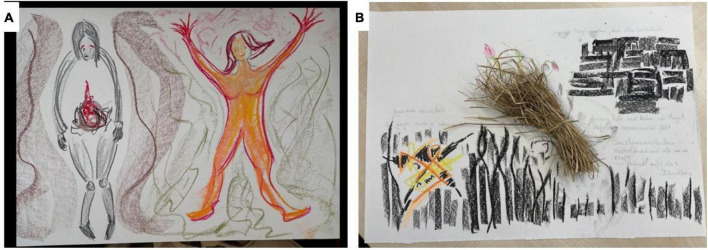FIGURE 4.
A depiction of a case study evaluating the application of art therapy within the mental health discipline. Using a brief movement exercise and innovative implementation, a patient with a recurrent depressive disorder has the following unexpected and novel experience: The movement exercise invites the patient to initially perceive her current posture and trace it, naming or describing it. Then, a movement impulse can be administered or relieved. This second movement may emerge spontaneously or through experimentation. It can also be given a name and intensify over time. As shown in Panel (A), the experience can be expressed creatively. Panel (B) describes a novel experience conveyed creatively through a brief movement exercise. This mental creative process reflected the current mental state and initially elicited resignation and frustration. The design stagnated as helplessness spread (“maybe the ribbon will tear”) and hindered.

